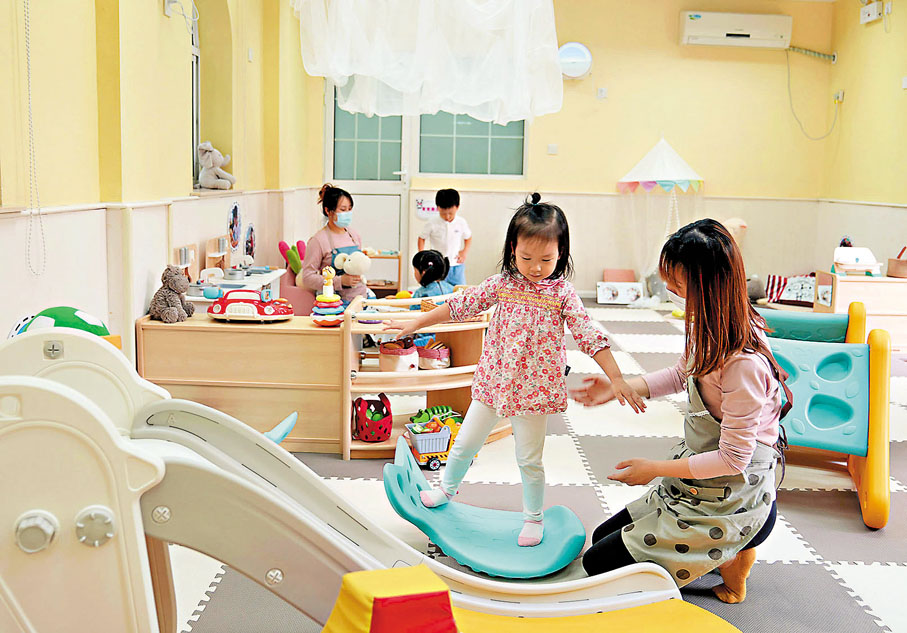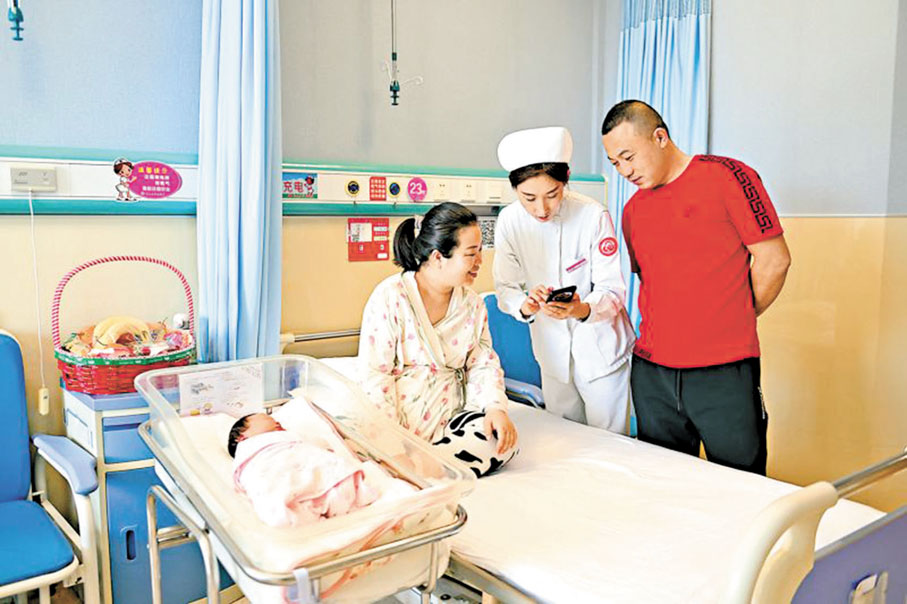【News Buddy】確立補貼標準 減輕育兒壓力


【原文】摘錄自3月25日香港《文匯報》:今年政府工作報告首次提出「發放育兒補貼」,國家衞健委表示,國家層面正在起草育兒補貼的操作方案。據不完全統計,今年以來已有23個省份在不同層級探索實施生育補貼制度。
專家表示,國家推動發放育兒補貼,以現金資助形式釋放構建生育友好型社會的強烈信號。期待國家育兒補貼操作方案盡快推出,形成全國統一的補貼標準、資金來源和發放方式,為各地制定具體政策提供指導,同時鼓勵生育需要系統性育兒政策支持,後續仍需更多普惠性、兜底性政策激勵。
2024年人口自然增長率大約為-0.1‰。內地每年的出生人口數亦連續下降多年,2024年出生人口954萬人,較2023年增加52萬人,終結了連續7年下降。2024年出生人口回升,國家統計局將原因歸結於生育意願累積、生育支持政策落實以及龍年生肖偏好等因素。
不過,統計局同時指出,內地育齡婦女特別是生育旺盛期育齡婦女仍在減少,對下階段出生人口依然存在影響。
「從某種意義上講,發放育兒補貼有利於提振中國經濟。」專家認為,人口問題與中國經濟總量密切相關。當前內地人口總量和結構都存在問題,比如男性比女性多3,000多萬,人口總量呈萎縮趨勢。這種人口結構不利於經濟持續增長,要在經濟發展中,有意識地優化和調整人口結構。
此外,老齡化使人口結構問題加劇,少子化導致未來參與經濟活動的總人口減少,經濟活動收縮。因此,適時推出育兒補貼非常重要,通過這種貨幣補貼的方式,構建生育友好的社會氛圍和政策環境,優化經濟增長空間。
「中國曾執行嚴格的一孩政策,積累了發放一孩補助的豐富經驗,所以推行這些補貼政策,操作難度不會太大。」專家提議,應探索建立由財政支持、資金來源多元化的育兒補貼制度,並向重點區域和重點人群傾斜。可考慮按季度或每兩個月發放一次。每年審核家庭養育孩子的狀況,補貼可一直延續到孩子12歲甚至18歲。
另外,不少育齡女性指出,生孩子不光要考慮生育成本,還要考慮養育成本、教育成本和醫療成本等,這些成本居高不下,必然會限制很多人的生育意願。
專家建議,除向1歲至12歲甚至18歲孩子的家庭發放育兒補貼外,還應給予父母較長時間的育兒假。當家中有8歲以下兒童時,父母可以採用彈性工作時間,平衡家庭與工作。此外,一定的教育、醫療補助也有助於減輕育兒壓力。
Experts Call for Standardized Childcare Subsidies
【譯文】This year's government work report proposed for the first time to "provide childcare subsidies", and the National Health Commission (NHC) has indicated that it is drafting an operational plan for childcare subsidies at the national level. According to incomplete statistics, 23 provinces have already explored implementing a maternity subsidy system at different levels this year.
According to experts, the state's promotion of childcare subsidies is a strong signal in the form of money to build a birth-friendly society.
We look forward to launching the national operational plan for childcare subsidies as soon as possible to form a unified national standard for the subsidy, its funding source, and payment method and provide guidance for localities in formulating specific policies. At the same time, encouraging childbearing requires the support of systematic childbearing policies, and there is still a need for more inclusive and bottom-up policies to promote childbearing.
The natural population growth rate in 2024 will be around -0.1 per thousand. The number of births on the Mainland has been declining for many years, but in 2024, there will be 9.54 million births, an increase of 0.52 million compared to 2023, ending seven consecutive years of decline. Two thousand twenty-four births will rebound, and the National Bureau of Statistics (NBS) attributed the rebound to factors such as the accumulation of fertility intentions, the implementation of childbearing policies, and a preference for the Chinese zodiac sign of the Year of the Dragon.
However, the Bureau also pointed out that the number of women of childbearing age in the Mainland, especially those in the prime of childbearing, is still decreasing, impacting the number of births in the next stage.
"In a sense, subsidizing childcare will help boost China's economy." Experts believe that the population issue is closely related to the total volume of China's economy. Currently, there are problems with the total size and structure of the mainland population, such as there are more than 30 million males than females, and the total population is shrinking. Such a population structure is not conducive to sustained economic growth. It is necessary to optimize and adjust the population structure consciously during economic development.
In addition, ageing has aggravated the problem of population structure, and childlessness has led to a decrease in the total population participating in economic activities in the future and a contraction of financial activities. Therefore, it is very important to introduce childcare subsidies in a timely manner to build a birth-friendly social atmosphere and policy environment and optimize the room for economic growth through this kind of monetary subsidy.
"China has accumulated rich experience in granting one-child subsidies due to its strict one-child policy, so it will not be too difficult to implement these subsidy policies." Experts believe that establishing a subsidy system for childcare that is financially supported by various funding sources should be explored and tilted toward key regions and populations. Consideration could be given to providing the subsidy quarterly or bi-monthly. Families' child-rearing status will be reviewed annually, and the subsidy can be extended until the child reaches the age of 12 or even 18.
In addition, many women of childbearing age have pointed out that not only do they have to consider the cost of giving birth to a child, but they also have to consider the cost of raising a child, the cost of education, the cost of medical care, etc. The fact that these costs remain high will undoubtedly limit the desire of many people to have children.
Experts suggest that in addition to subsidizing childcare for families with children aged 1-12 or even 18, parents should be given longer parental leave. Parents can adopt flexible working hours when children are under 8 years old to balance family and work. In addition, a certain amount of education and medical subsidies can also help alleviate the pressure of parenting. ●琬琰
小測試
Complete the sentences below using NO MORE THAN TWO WORDS from the passage for each answer.
Q1: The government's childcare subsidy plan aims to create a ______ society by using monetary incentives.
Q2: In 2024, the number of births increased by ______ compared to 2023, ending a seven-year decline.
Q3: Experts argue that China's current population structure, including a gender imbalance of over ______ males, hinders sustainable economic growth.
Q4: Childcare subsidies could be distributed ______ or every two months to eligible families.
Q5: To balance work and family life, parents of children under 8 should be allowed ______ working hours.
參考答案
(1)fertility-friendly;(2) 520,000;
(3)30 million;(4)quarterly;
(5)flexible
